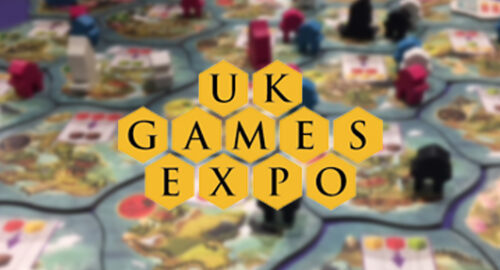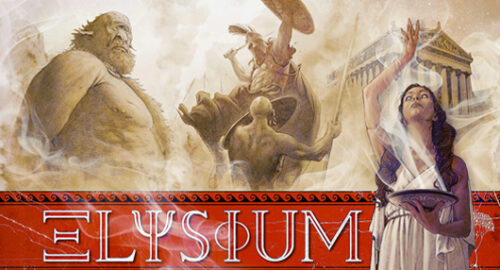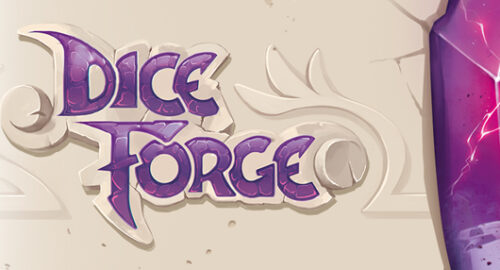Takenoko!
[box type="info"]
• Designer: Antoine Bauza, Picksel, Nicolas Fructus, Yuio
• Publisher: Asmodee
• Number of Players: 2-4
• Playing Time: 45 mins
[/box]
 This game is incredibly adorably gorgeously stunningly pretty. From the hexagonal garden tiles with detailed depictions of the garden vegetation, to the miniatures of the panda and the gardener and to the little wooden action tokens, this game is drop dead gorgeous. Once you start to play Takenoko, it becomes even more so when the bamboo garden grows and the gaming board is filled with the 3D garden of yellow, green and pink bamboo. Also there is unexplainable satisfaction that comes from stacking pieces bamboo on top of each other.
This game is incredibly adorably gorgeously stunningly pretty. From the hexagonal garden tiles with detailed depictions of the garden vegetation, to the miniatures of the panda and the gardener and to the little wooden action tokens, this game is drop dead gorgeous. Once you start to play Takenoko, it becomes even more so when the bamboo garden grows and the gaming board is filled with the 3D garden of yellow, green and pink bamboo. Also there is unexplainable satisfaction that comes from stacking pieces bamboo on top of each other.
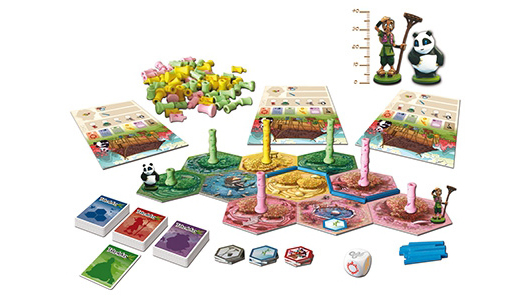 Having said all of the above, I have found out that this is both an advantage and a disadvantage for the game. The advantage obviously being that the game is a constant eye pleaser. The disadvantage is the assumption that if the game is pretty and pink it is designed for children and therefore is not interesting, or even worse, is not good. This is such a shame because behind the cute panda on the box, there is a great competitive, easy to learn and dynamic game that will bring many hours of fun and enjoyment.
For those of us who played it before, Takenoko is also one of those rare ‘gateway’ board games. Its game mechanic appeals to both experienced and new board gamers, and even those who have not yet played any board games at all. The rules are so simple to explain that I have managed to cover the majority of them in my opening paragraph. In order to win the game, the players complete 7 objective cards of 3 types available — panda cards, gardeners cards, and emperors cards — which are illustrated beautifully to tell exactly what needs to be achieved. Players mark the two actions they want to take on their player sheet and also get a random action by rolling the Weather Dice. It’s so simple but it works.
Having said all of the above, I have found out that this is both an advantage and a disadvantage for the game. The advantage obviously being that the game is a constant eye pleaser. The disadvantage is the assumption that if the game is pretty and pink it is designed for children and therefore is not interesting, or even worse, is not good. This is such a shame because behind the cute panda on the box, there is a great competitive, easy to learn and dynamic game that will bring many hours of fun and enjoyment.
For those of us who played it before, Takenoko is also one of those rare ‘gateway’ board games. Its game mechanic appeals to both experienced and new board gamers, and even those who have not yet played any board games at all. The rules are so simple to explain that I have managed to cover the majority of them in my opening paragraph. In order to win the game, the players complete 7 objective cards of 3 types available — panda cards, gardeners cards, and emperors cards — which are illustrated beautifully to tell exactly what needs to be achieved. Players mark the two actions they want to take on their player sheet and also get a random action by rolling the Weather Dice. It’s so simple but it works.
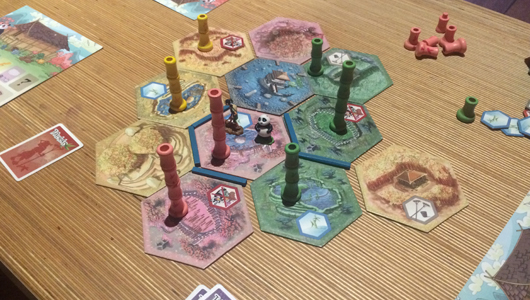 As useful as the Weather Dice can be, it is the only part of the game that is slightly unbalanced. Some dice outcomes are substantially more useful than others. The double wind outcome — doing the same action twice — always seems to be the least popular. In all the times I have played the game, this outcome has always caused the most questions and confusion as it seems the least fair and the least useful. Even the game creator has realised the unfairness of this action, as this is the only outcome where player ‘is not required to’ perform the action. However, even if you get to choose whether to do the same action twice or not, you still have one less action than everyone else at the table during that round. On the other hand, the sun outcome – have an extra action – is overpowered compared to the rest. Of course, as with any dice rolling, you either luckily roll the sun or are unlucky and roll the wind. However, I don’t think this random element is necessary for the game that is so eager to encourage players to carefully consider and plan their turns. Although the Weather Dice fits well within the narrative of the game and logically is a good addition – we are growing a garden here, weather is bound to play a part in our efforts – after playing the game as much as I have, my conclusion is that in terms of game mechanics I could happily live without the dice.
There is one aspect of the game that I really want to praise. While Takenoko is definitely very competitive, it is not a game where players can mess each other up on purpose. If played by rules, there is no way in Takenoko for a player to knowingly perform an action that will rob the other player of that one thing that they really-really needed to complete a card. Someone might move panda in the position which will not allow the player after them to eat that green bamboo or someone might put the tile of the colour that breaks the arrangement. However, none of this is done on purpose because players cannot see each other’s uncompleted objective cards. In fact, this rarely happens. In most cases other players have unknowingly helped each other to complete cards. By doing something they needed to complete their own cards, they have put down tiles or irrigation channels or have grown bamboo which was exactly what other player needed as well. I have not seen a lot of that kind of game-play in many other board games and I really enjoy this about Takenoko. The game is so good natured in its every aspect, from adorable backstory to the actual game-play, that it is absolutely the nicest and the kindest board game to play. Although, I especially enjoy sabotaging someone to set me on the path to victory and known among my friends to be the Queen of Messing People Up in board games, I don’t feel that Takenoko is less fun by doing something different.
As useful as the Weather Dice can be, it is the only part of the game that is slightly unbalanced. Some dice outcomes are substantially more useful than others. The double wind outcome — doing the same action twice — always seems to be the least popular. In all the times I have played the game, this outcome has always caused the most questions and confusion as it seems the least fair and the least useful. Even the game creator has realised the unfairness of this action, as this is the only outcome where player ‘is not required to’ perform the action. However, even if you get to choose whether to do the same action twice or not, you still have one less action than everyone else at the table during that round. On the other hand, the sun outcome – have an extra action – is overpowered compared to the rest. Of course, as with any dice rolling, you either luckily roll the sun or are unlucky and roll the wind. However, I don’t think this random element is necessary for the game that is so eager to encourage players to carefully consider and plan their turns. Although the Weather Dice fits well within the narrative of the game and logically is a good addition – we are growing a garden here, weather is bound to play a part in our efforts – after playing the game as much as I have, my conclusion is that in terms of game mechanics I could happily live without the dice.
There is one aspect of the game that I really want to praise. While Takenoko is definitely very competitive, it is not a game where players can mess each other up on purpose. If played by rules, there is no way in Takenoko for a player to knowingly perform an action that will rob the other player of that one thing that they really-really needed to complete a card. Someone might move panda in the position which will not allow the player after them to eat that green bamboo or someone might put the tile of the colour that breaks the arrangement. However, none of this is done on purpose because players cannot see each other’s uncompleted objective cards. In fact, this rarely happens. In most cases other players have unknowingly helped each other to complete cards. By doing something they needed to complete their own cards, they have put down tiles or irrigation channels or have grown bamboo which was exactly what other player needed as well. I have not seen a lot of that kind of game-play in many other board games and I really enjoy this about Takenoko. The game is so good natured in its every aspect, from adorable backstory to the actual game-play, that it is absolutely the nicest and the kindest board game to play. Although, I especially enjoy sabotaging someone to set me on the path to victory and known among my friends to be the Queen of Messing People Up in board games, I don’t feel that Takenoko is less fun by doing something different.
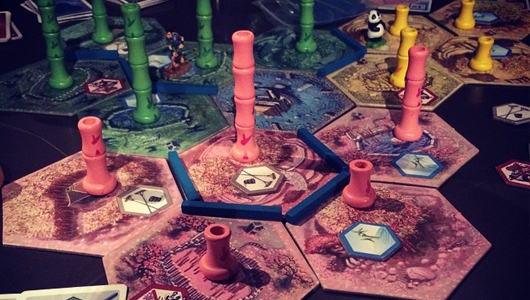 Another possible flaw in Takenoko is a lack of variation in the game-play. As the goal and the objective cards are always the same, this is not a game to play obsessively for hours and days. After playing one game, the players have done it all and there is little incentive to have another go. However, I find myself returning to the game every month or so when I want something light hearted, easy to set up and play. It is also a board game that guarantees 40 minutes of enjoyment. This pattern has been continuing for two years now and I am yet to get tired of the game.
[box type="tick"]Ridiculously pretty![/box]
[box type="tick"]Easy to follow and fun game-play[/box]
[box type="alert"]The weather dice outcomes are unbalanced[/box]
[box type="alert"]Repetitive game-play[/box]
Overall Takenoko is a great game. Its minor flaws are almost insignificant in comparison to all the other things that this game is doing right. The price of the game is reasonable compared to the game’s value. The artwork is gorgeous and while this is not the game one would ‘obsess’ about, it is a great addition to any board game shelf that will be played for many years after the purchase.
Another possible flaw in Takenoko is a lack of variation in the game-play. As the goal and the objective cards are always the same, this is not a game to play obsessively for hours and days. After playing one game, the players have done it all and there is little incentive to have another go. However, I find myself returning to the game every month or so when I want something light hearted, easy to set up and play. It is also a board game that guarantees 40 minutes of enjoyment. This pattern has been continuing for two years now and I am yet to get tired of the game.
[box type="tick"]Ridiculously pretty![/box]
[box type="tick"]Easy to follow and fun game-play[/box]
[box type="alert"]The weather dice outcomes are unbalanced[/box]
[box type="alert"]Repetitive game-play[/box]
Overall Takenoko is a great game. Its minor flaws are almost insignificant in comparison to all the other things that this game is doing right. The price of the game is reasonable compared to the game’s value. The artwork is gorgeous and while this is not the game one would ‘obsess’ about, it is a great addition to any board game shelf that will be played for many years after the purchase.
A copy of this game is available to play at Loading bar.
[box type="info"]This game was reviewed at Loading Bar[/box] ]]>
